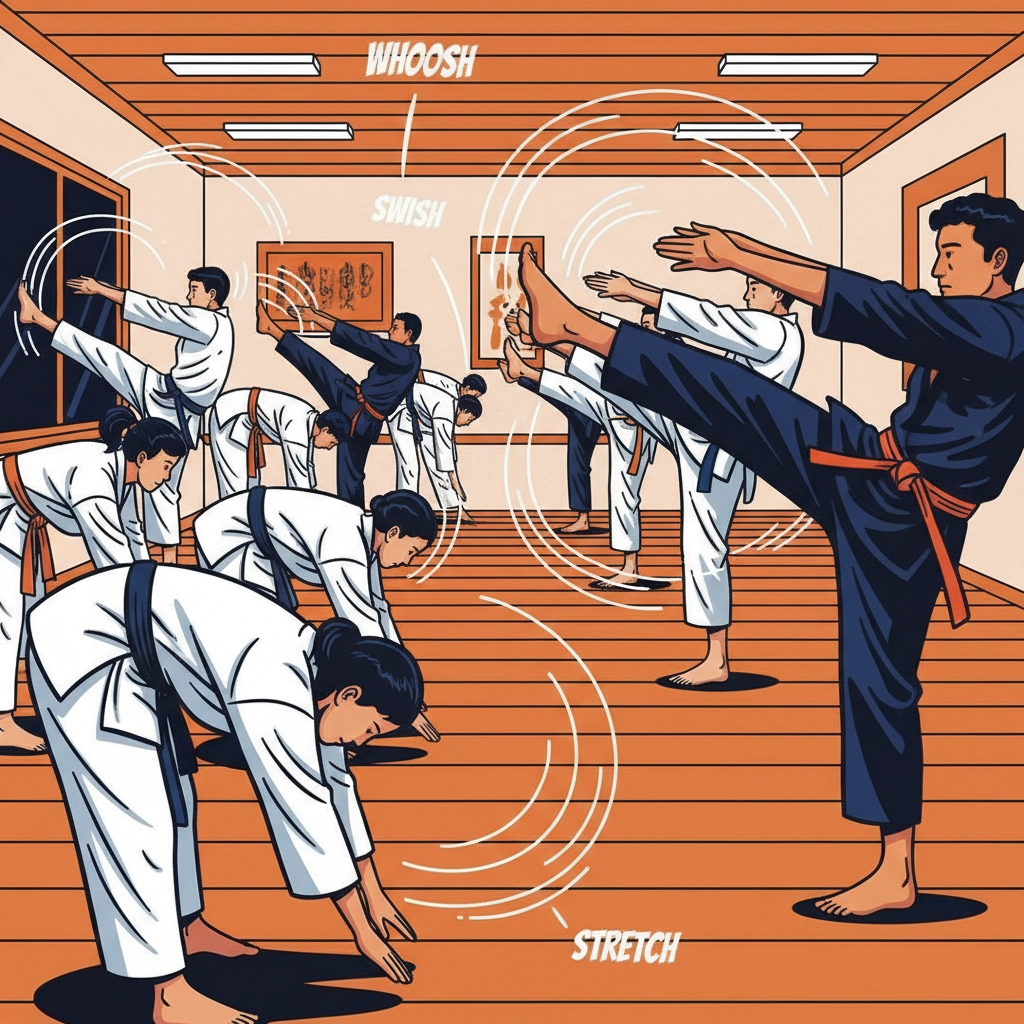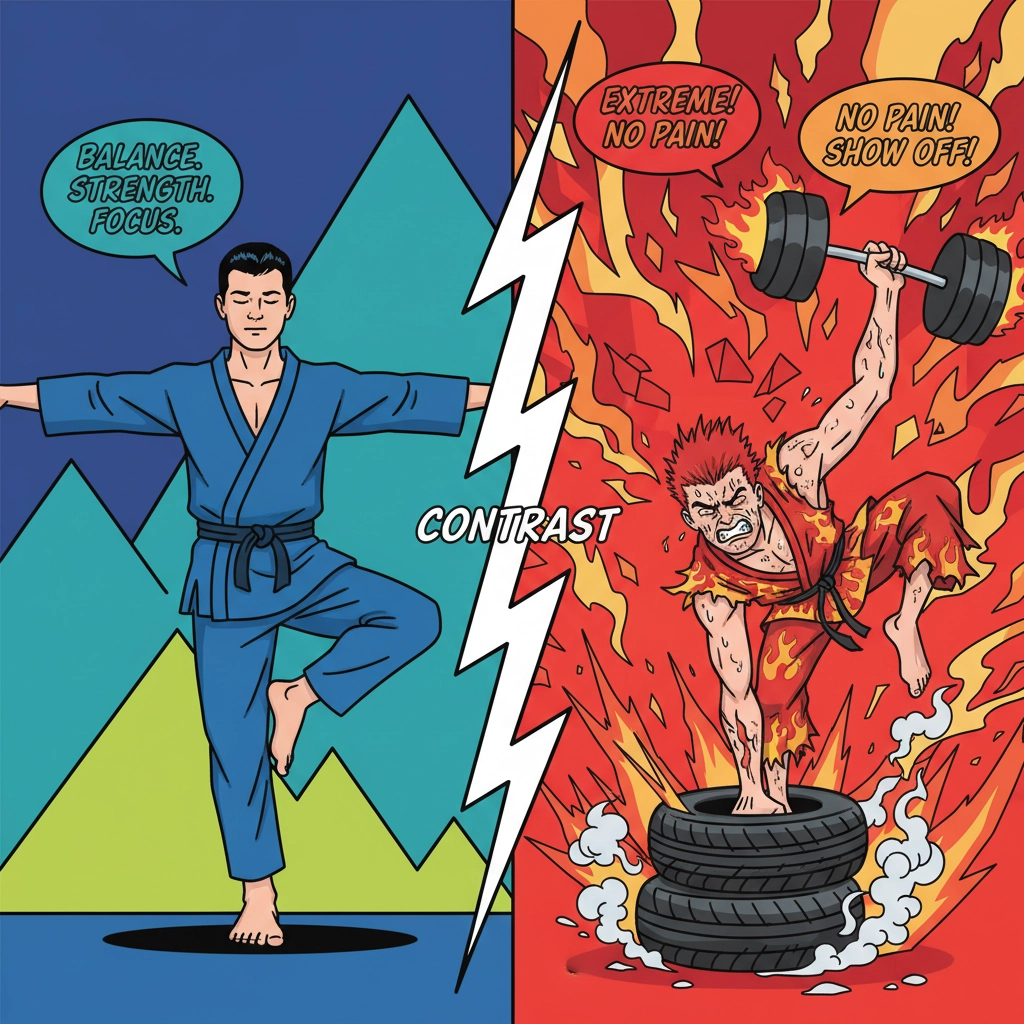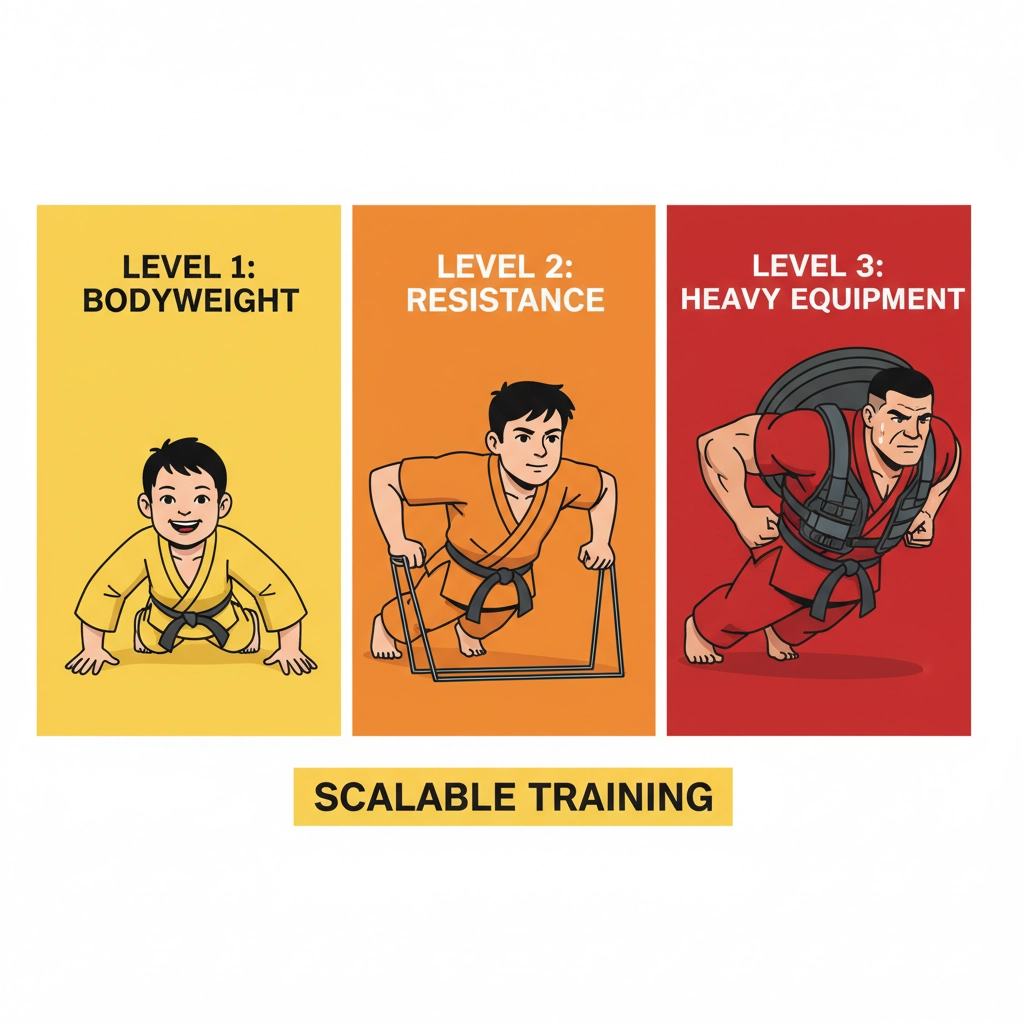Hey everyone! If you're running a martial arts school, you've probably started incorporating functional strength training into your classes. Smart move: it's one of the best ways to help your students build real-world strength that translates directly to their martial arts performance.
But here's the thing: I've seen too many instructors make the same preventable mistakes that can actually hurt their students' progress or worse, get someone injured. Let's fix that right now.
Mistake #1: Skipping the Warm-Up (Because Class Time is Limited)
I get it. You've got 45 minutes to teach technique, work on forms, and squeeze in some strength training. The warm-up feels like wasted time when you could be getting straight to the "good stuff."
But here's what happens when you skip it: your students' muscles are cold, their joints aren't ready to move through full ranges of motion, and most importantly, their nervous systems aren't activated. This doesn't just increase injury risk: it actually makes the functional training less effective because they can't move properly or fully through the exercises.
The Fix: Build a 5-minute dynamic warm-up that doubles as functional training prep. Think martial arts-specific movements like leg swings, arm circles, and bodyweight squats. Your students will move better during the strength portion, and you'll save time by preventing the movement restrictions that come from jumping straight into training.

Mistake #2: Choosing Exercises That Look Cool Instead of What Your Students Need
We've all been there. You see some awesome-looking exercise on social media and think, "My students would love this!" But functional training isn't about impressing anyone: it's about building strength that makes your students better martial artists.
Too many instructors pick exercises because they look dynamic or challenging, not because they address the specific movement patterns their students need for their martial art.
The Fix: Start with the movements your students actually do in class. Need better kicks? Focus on single-leg stability and hip mobility exercises. Working on grappling? Prioritize core strength and pulling patterns. Every exercise should clearly connect to something they do on the mat.
Mistake #3: Using the Same Weight or Intensity for Everyone
This one drives me crazy. I've seen instructors hand out the same resistance bands or kettlebells to a class of 20 students ranging from 8-year-old beginners to adult black belts. What happens? Half the class is bored because it's too easy, and the other half can't complete the movement safely.
When everyone's doing the same load, you're either under-training your stronger students or over-training your newer ones. Neither scenario helps anyone get better.
This isn't just about weighted exercises—the same applies to pushups, situps, and so on.
The Fix: Always offer three options for every exercise: beginner, intermediate, and advanced. This could be different weights, modified ranges of motion, or completely different exercise variations. Teach your students how to choose the right option for themselves. It's not about ego; it's about training smart.
Mistake #4: Ignoring Proper Form to Keep Up with Class Pace
Here's a scenario I always see: you're leading a group through functional exercises, trying to keep everyone moving together, and you notice someone's form breaking down. But the class is flowing, everyone else is keeping up, so you let it slide.
Bad move. Poor form in functional training doesn't just limit the exercise's effectiveness: it can create movement patterns that actually hurt their martial arts performance. Word can spread quickly if one student gets injured because of bad form.
The Fix: Slow down the pace and prioritize quality over quantity. It's better to do eight perfect reps than 15 sloppy ones. Use the "pause and fix" method: when you see poor form, pause the entire class, demonstrate the correction, and then continue. Your students will respect the attention to detail.

Mistake #5: Programming Like It's a Separate Workout Instead of Class Integration
I've watched instructors essentially run a CrossFit class in the middle of their martial arts lesson. They'll do 20 minutes of martial arts, then completely shift gears into an intense strength circuit, then try to go back to technique work.
This approach treats functional training as separate from martial arts instead of something that enhances it. Your students become exhausted from the strength work and can't perform techniques properly afterward.
The Fix: Weave functional exercises throughout your class instead of lumping them together. Use strength exercises as active recovery between technique drills, or incorporate them as movement prep for specific techniques you're teaching. The goal is integration, not separation.
Mistake #6: Never Progressing or Changing the Exercises
Some instructors find a few functional exercises they like, and then stick with them for months (or years). Your students master bodyweight squats in week three, but you're still doing the same squats in week thirty.
When there's no progression, your students stop getting stronger. Worse, they get bored and start seeing the functional training portion as something to endure rather than something that makes them better martial artists.
The Fix: Plan progression into every exercise from day one. This could be adding resistance, increasing range of motion, speeding up the movement, or progressing to more challenging variations. Keep a simple record of what exercises you're doing so you can systematically progress every few weeks.

Mistake #7: Forgetting That Recovery Happens Outside Your School
The mistake often gets overlooked: You program intense functional training multiple times weekly, but you never talk to your students about recovery. You don't know if they're training at other gyms, doing their own workouts at home, or getting enough sleep to benefit from your teaching. (Side note: This was the most challenging thing when I developed the FORCE strength and conditioning program.)
Recovery isn't just about rest days: it's about making sure your students' bodies can adapt to the training stimulus you're providing. Without proper recovery, all that functional training becomes counterproductive.
The Fix: Educate your students about recovery basics. Recommend they get 7-9 hours of sleep, stay hydrated, and avoid training the same movement patterns on consecutive days if they're working out elsewhere. Consider scheduling your most intense functional training sessions earlier in the week so students have time to recover before weekend tournaments or seminars.
Making It Work for Your School
Look, functional strength training isn't complicated, but it does require some thought and planning. The biggest mistake I see is treating it like an afterthought instead of an integral part of your students' martial arts development.
Start simple. Pick one or two of these mistakes that hit closest to home and focus on fixing those first. Your students will notice the difference in how they move, how they feel, and how their martial arts performance improves.
Remember: the goal isn't to become a strength coach overnight. The goal is to use functional training as a tool to make your students better martial artists. Keep it simple, keep it relevant, and keep it safe.
Your students trust you to help them improve. These fixes will help you live up to that trust while building a stronger, more capable martial arts community in your school.

